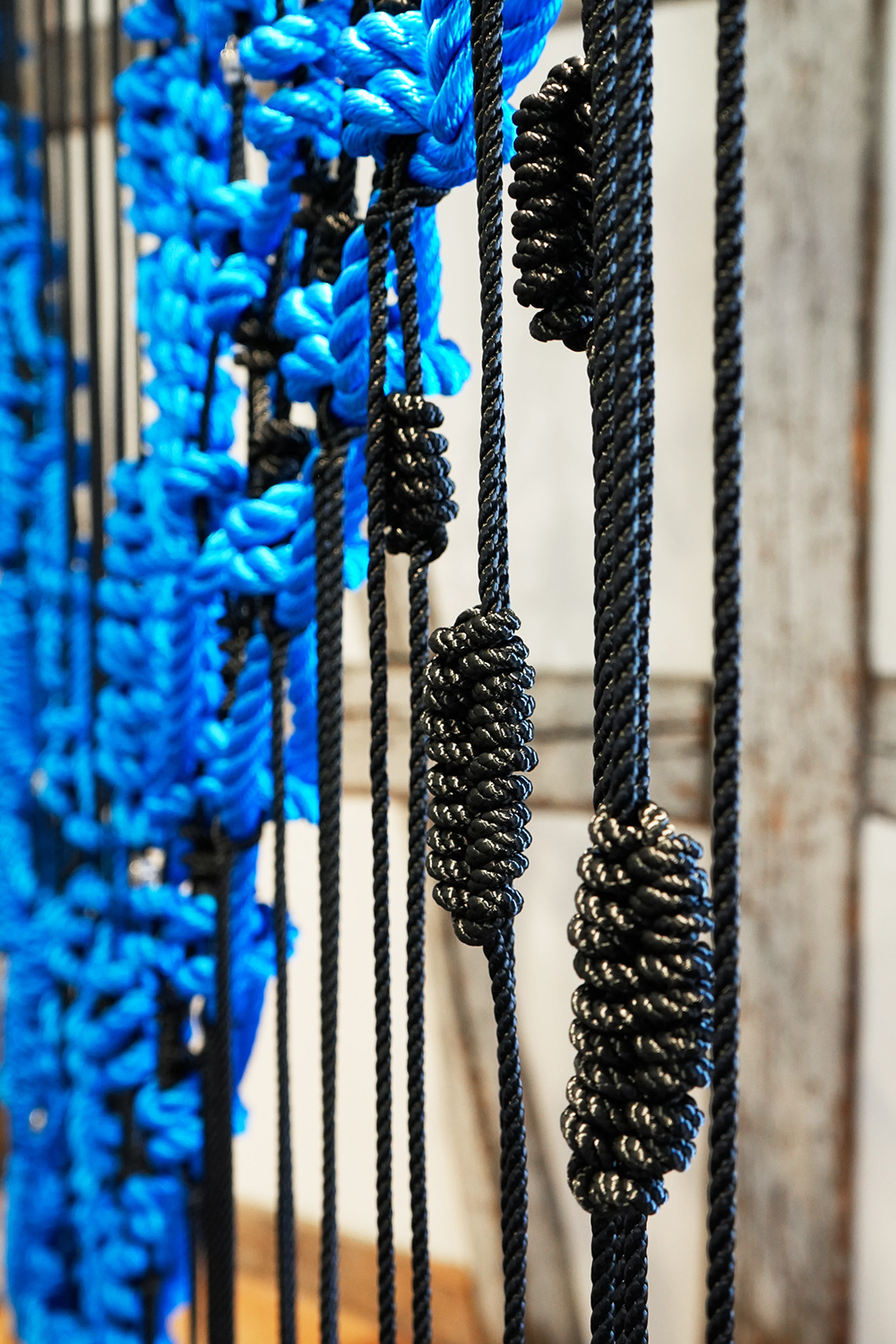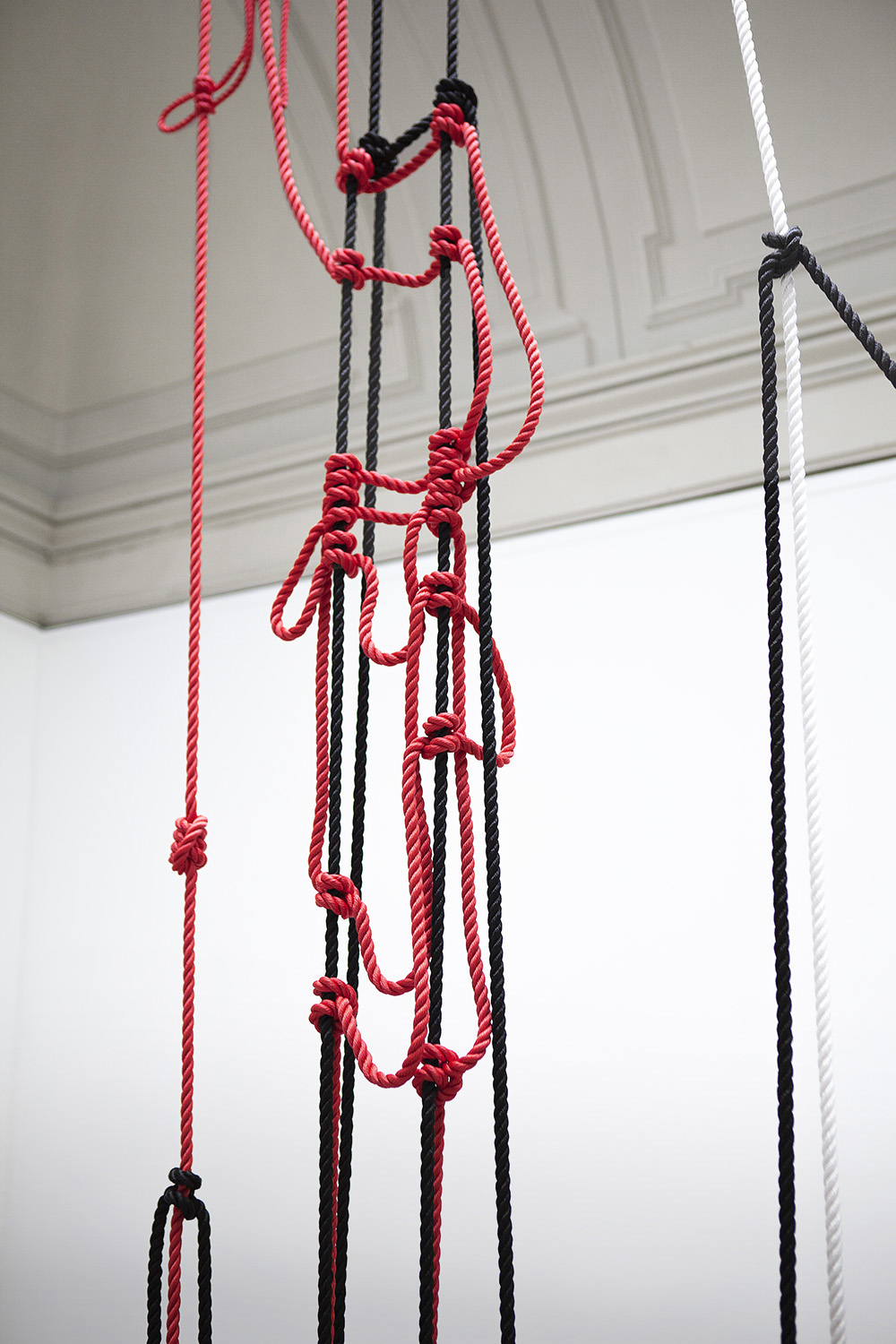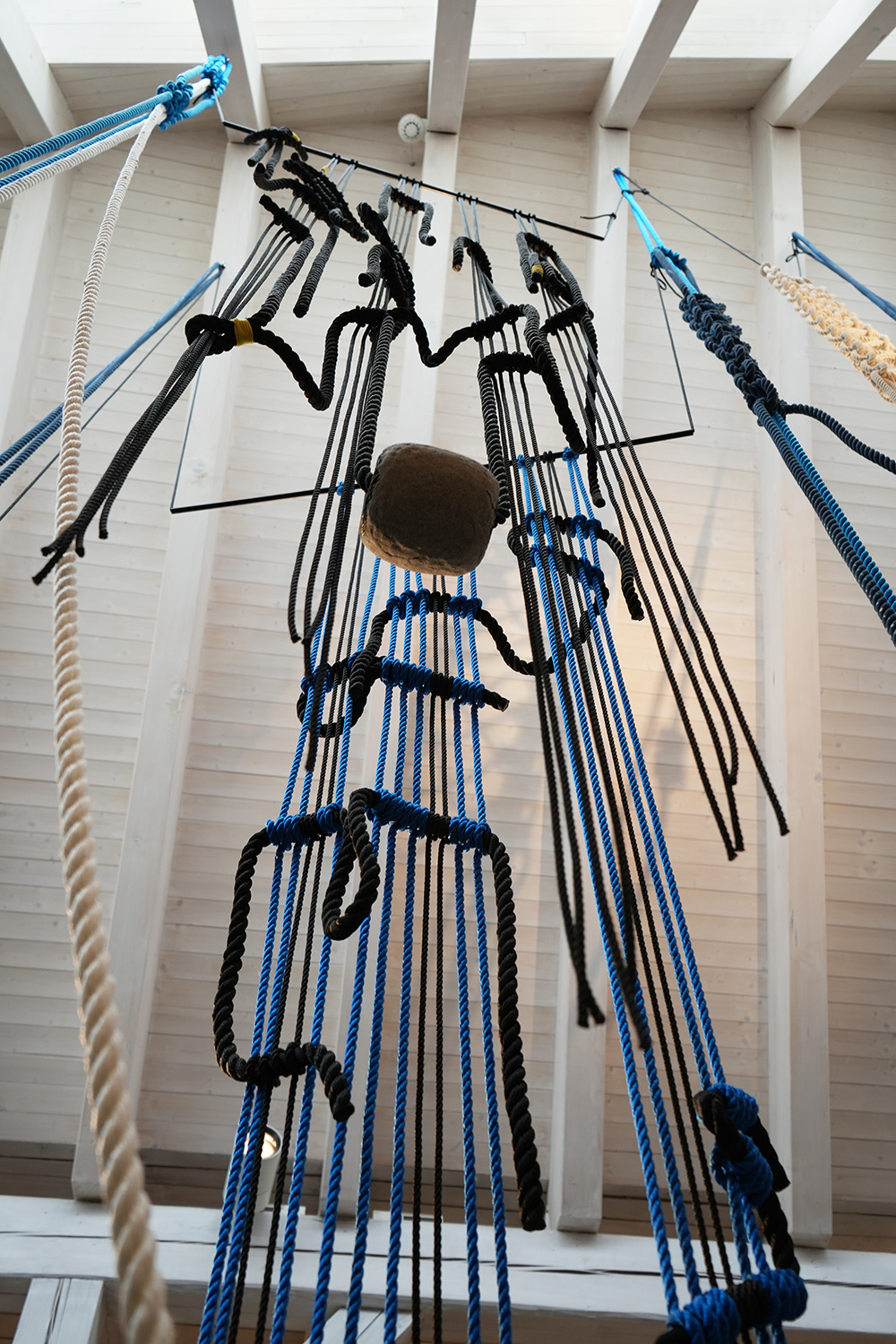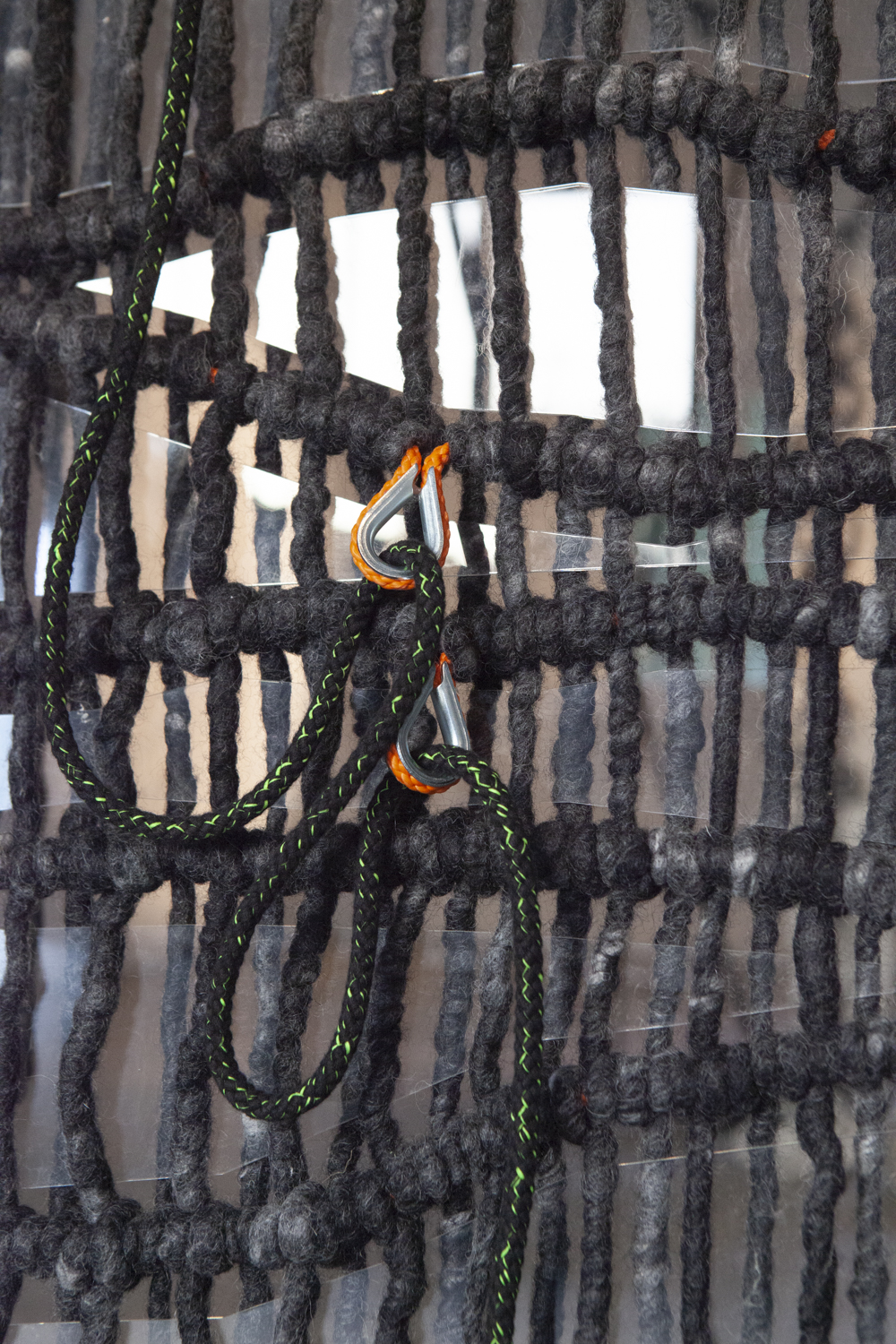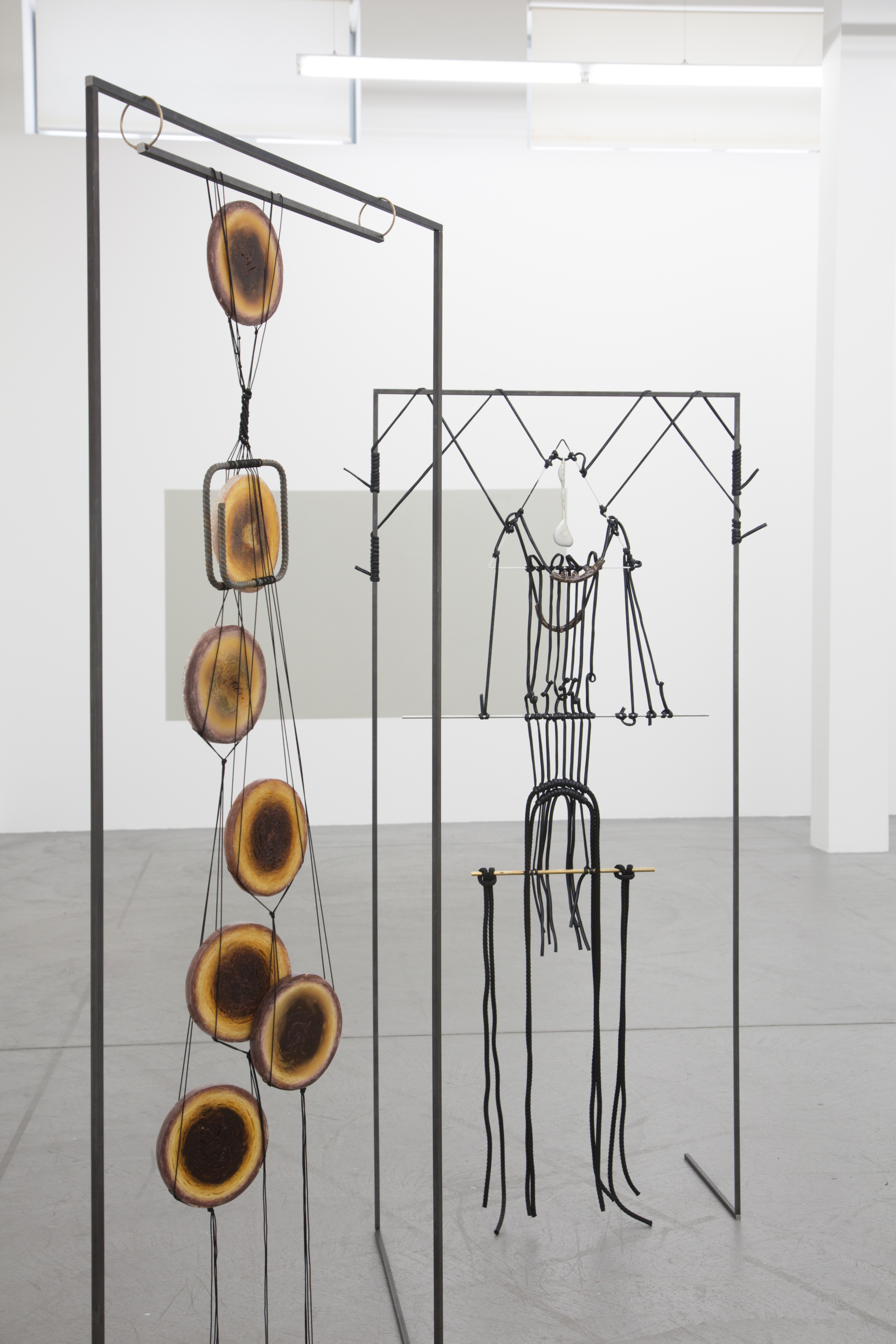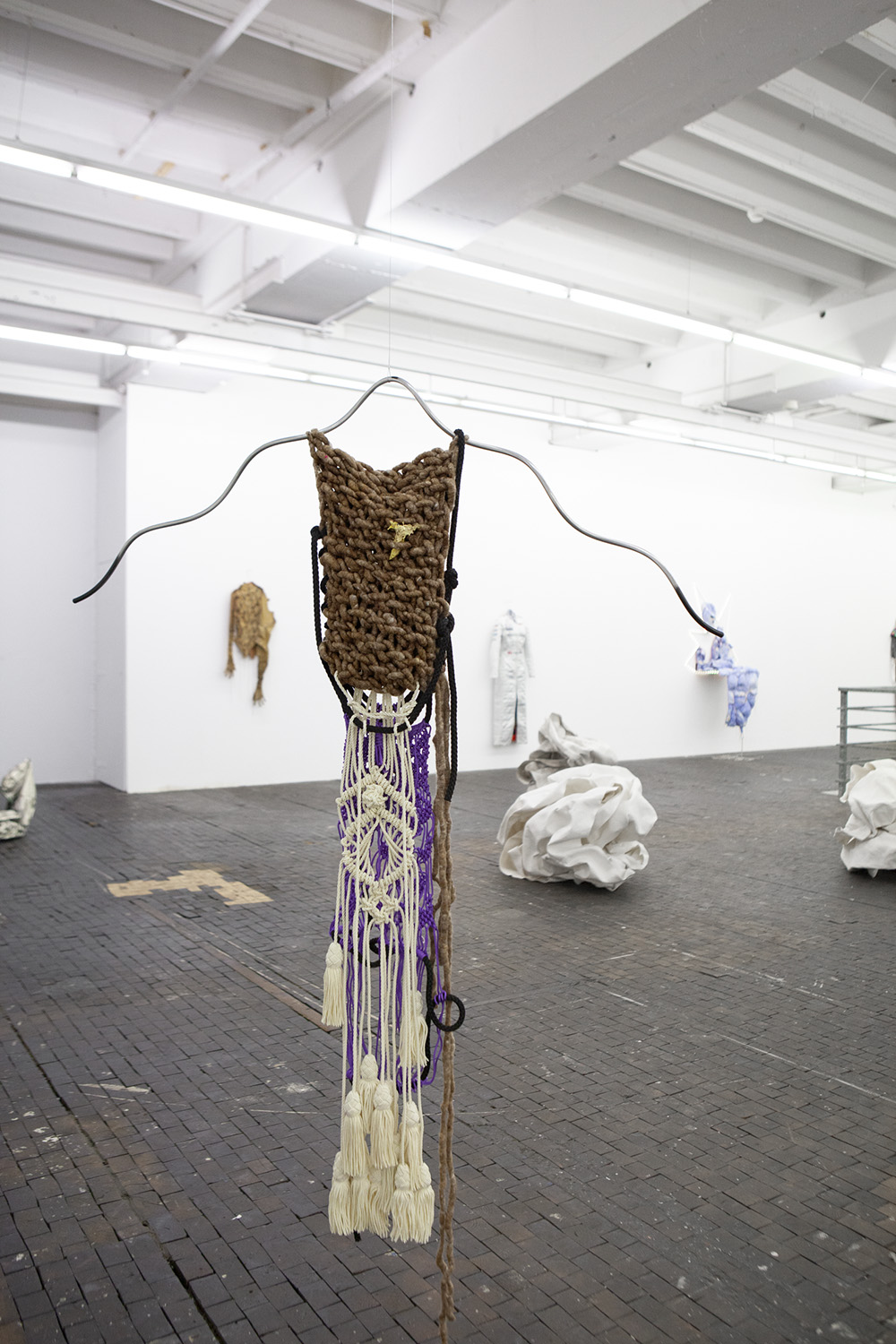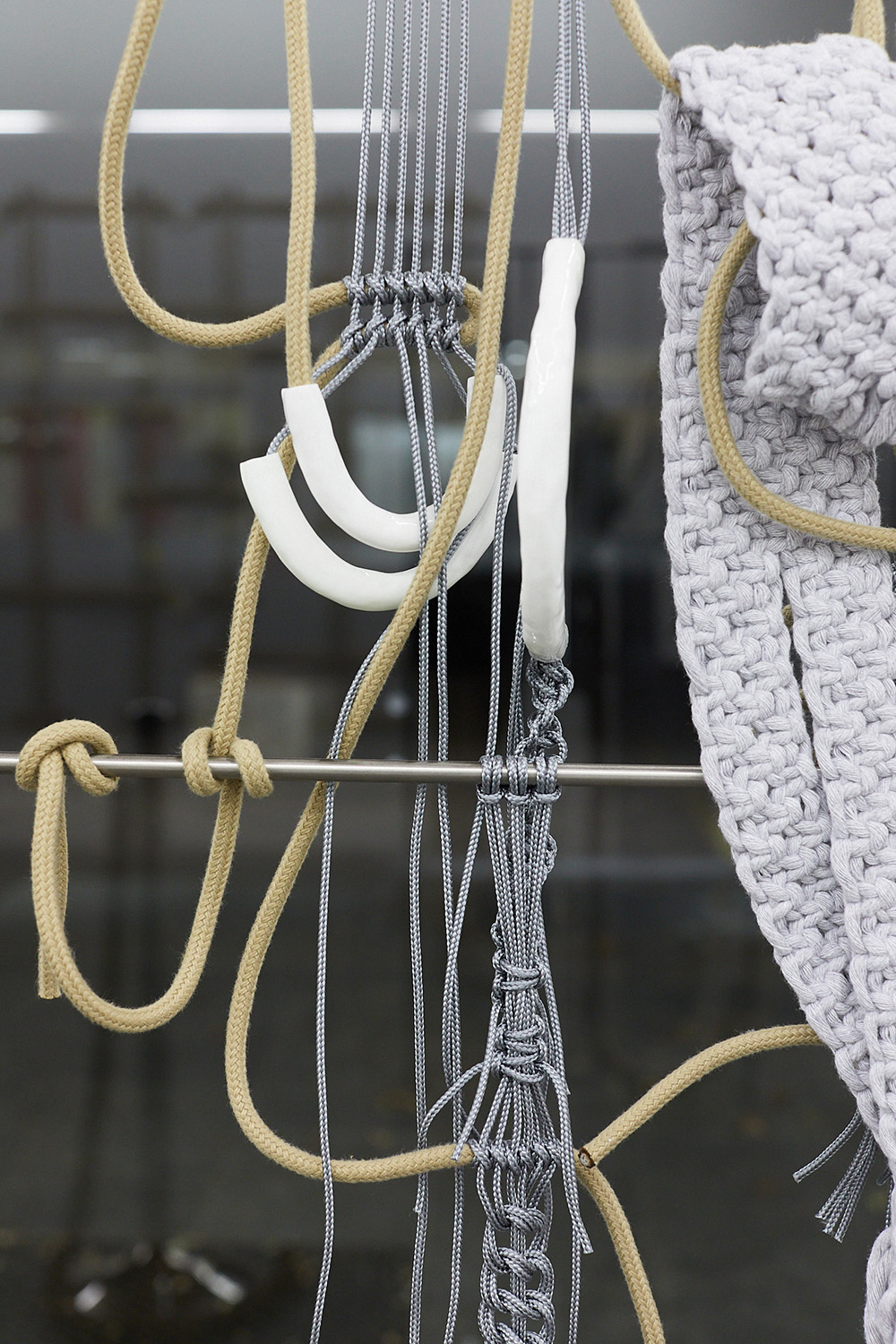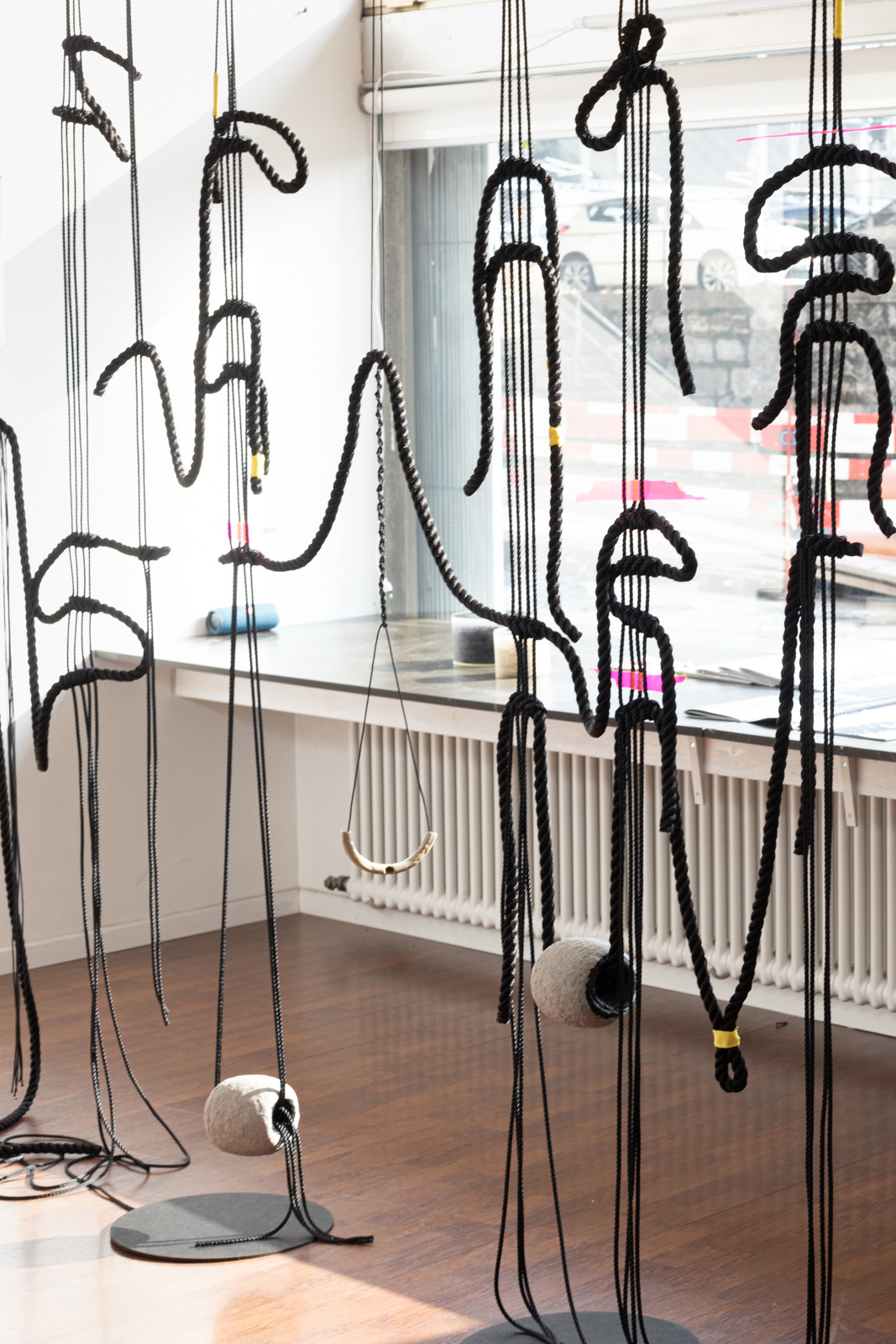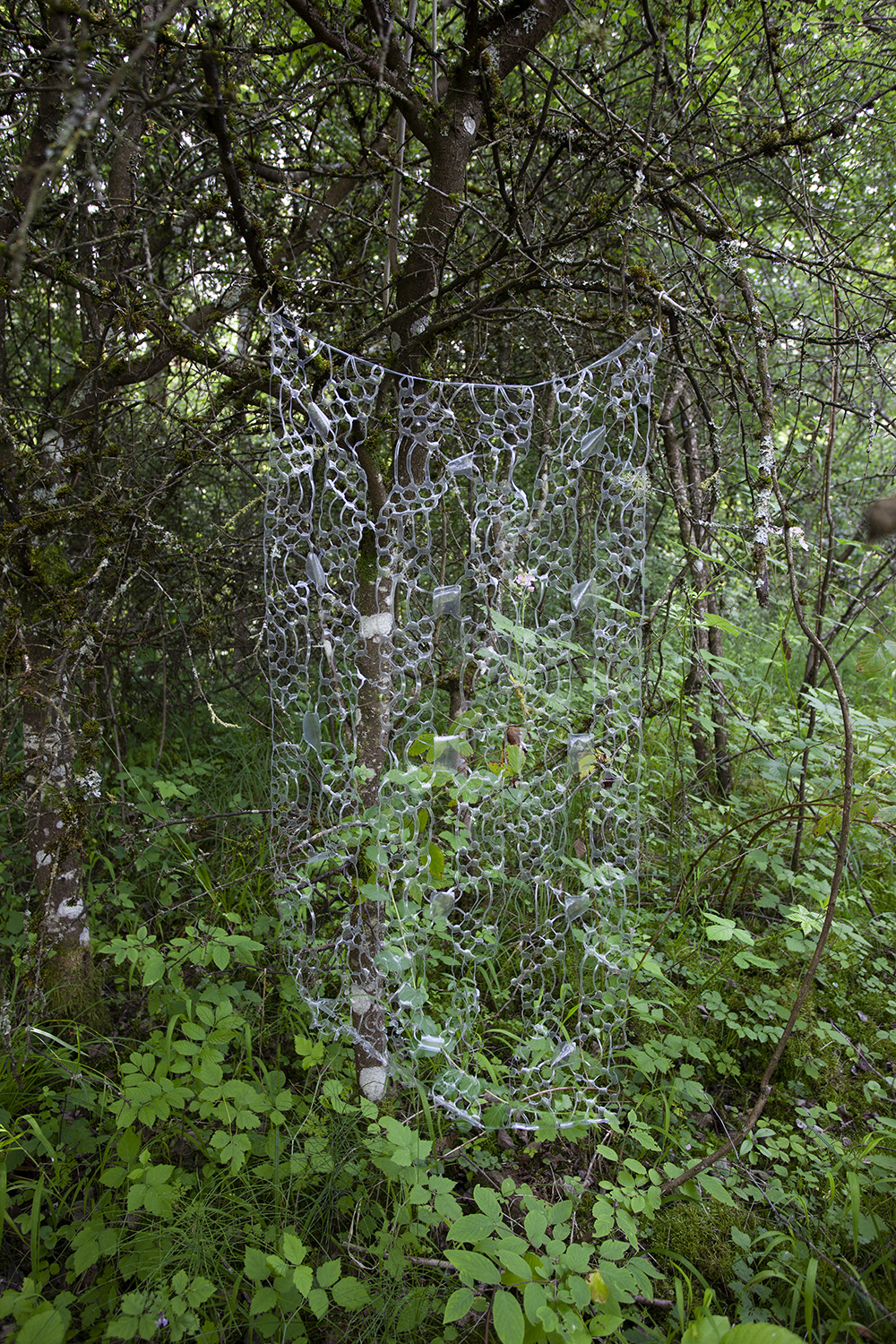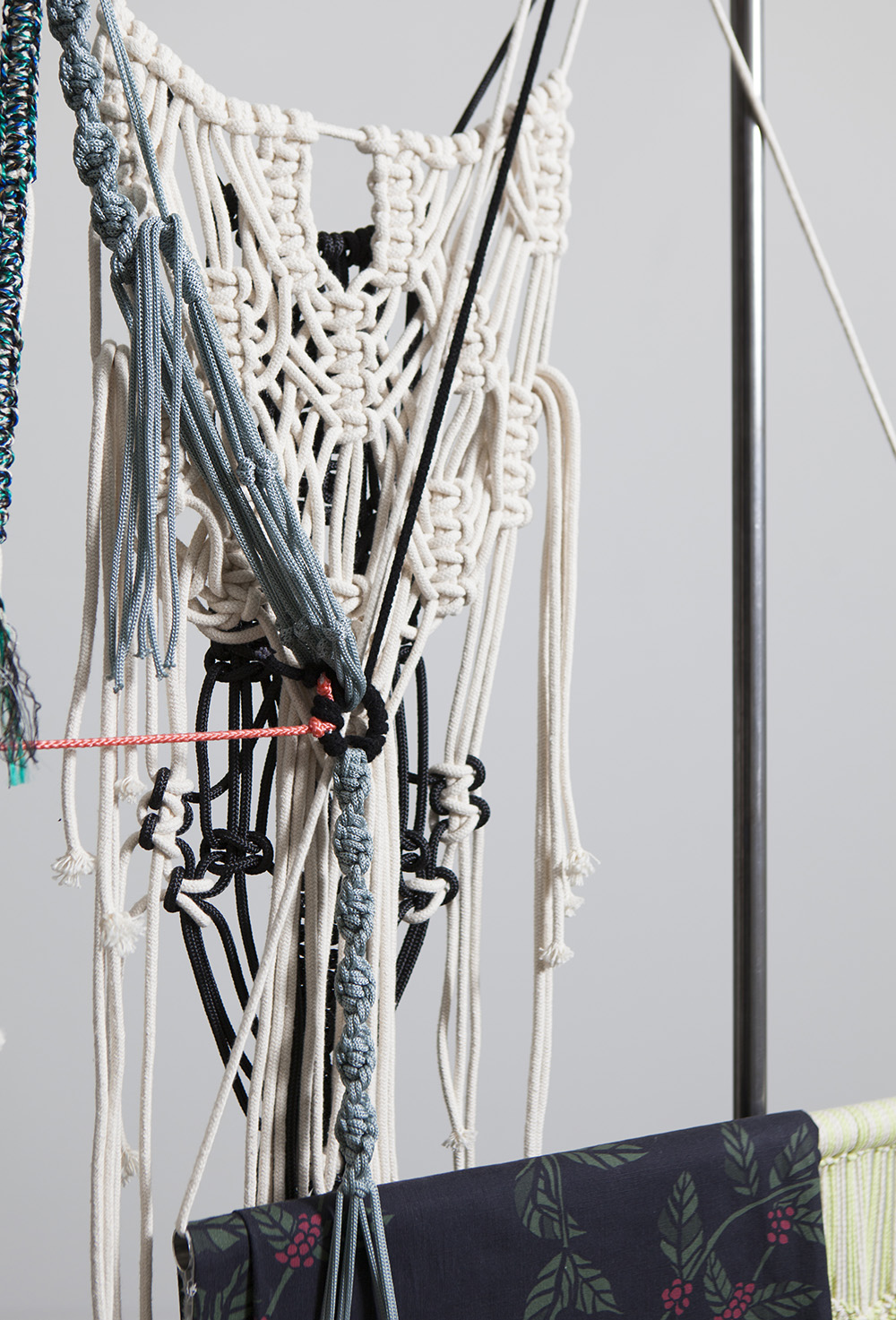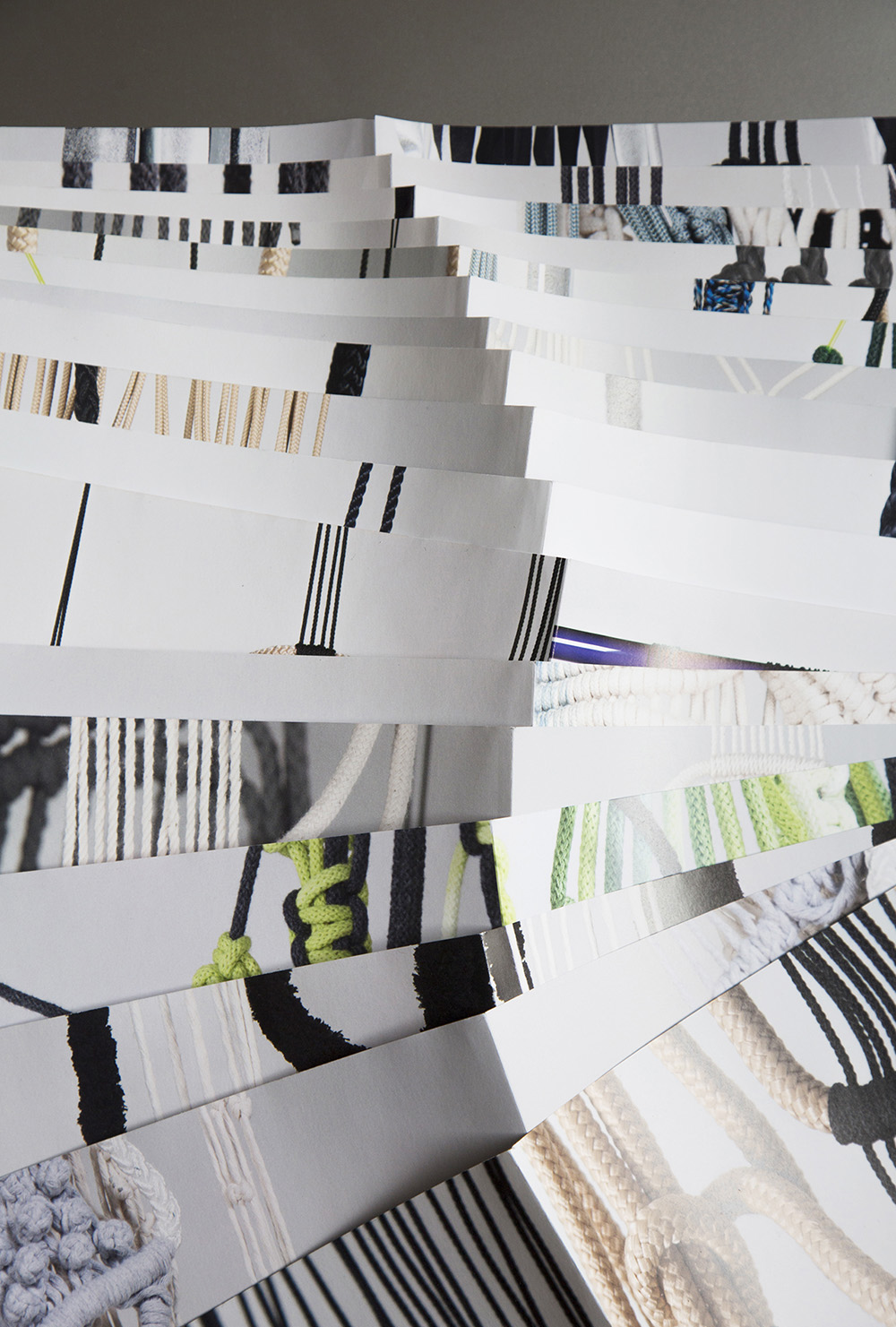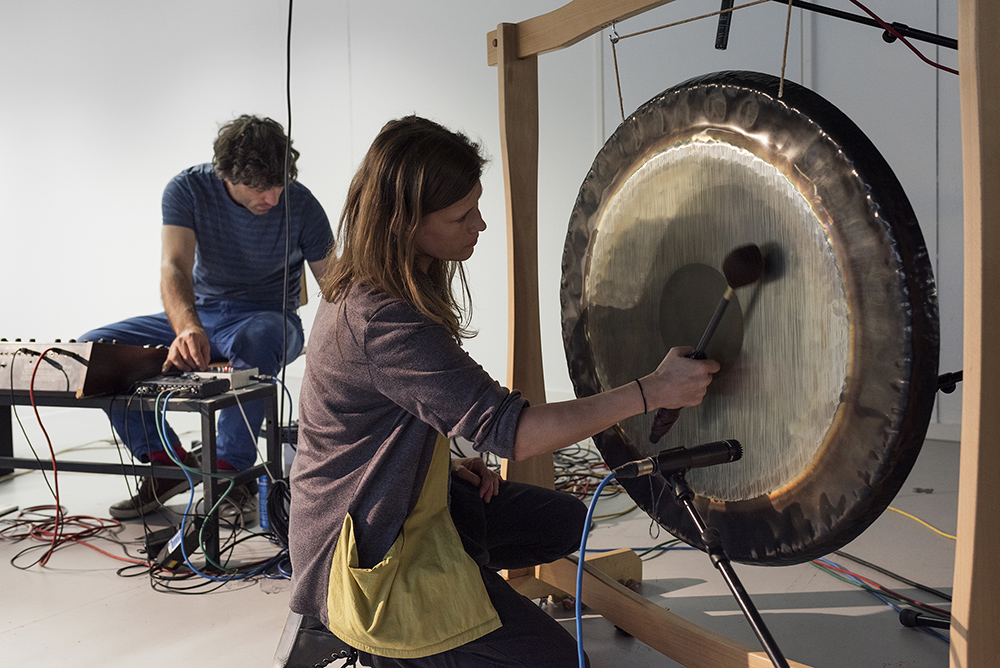B
U
T
T
E
R
F
L
Y
E
F
F
E
C
T
I
+
II
I
N
M
Butterfly Effect, 2024
Installation
MIT SYSTEMEN SPIELEN
Der Versuch, Dinge oder Naturphänomene in ein Verhältnis zueinander zu
setzen, um «darin», «dahinter» oder «darüber» ein greifbares System zu
erkennen, schafft Versuchsanlagen von Ordnungen, die gleichzeitig ebenso
hinterfragen wie sie etwas vorstellen und darstellen. Welche Rolle
nimmt dabei der künstlerische Blick ein? Was lösen Störung, Brüche mit
solchen Ordnungen aus? Was verheissen uns Prinzipien wie als-ob und
sowohl-als-auch?
Butterfly Effect I+II heisst die zweiteilige Arbeit von Lisa Biedlingmaier, ausgestellt im Haus zur Glocke und im Steckborner Stadthaus. Mit der Makramee-Knüpftechnik und anderen traditionellen Techniken erschafft die Künstlerin Installationen aus Kordeln und gefundenen Objekten. Auf dem Dachboden des Haus zur Glocke erkenne ich den Schmetterling aus blauen und schwarzen Kordeln, frei schwebend und gleichzeitig in einer Netzstruktur gefangen. Für die Künstlerin, die sich mit Psychologie, Neurologie und Heilungsprozessen auseinandersetzt sowie Gesellschaftssysteme auf diese Gesichtspunkte hin untersucht, erhalten die verknoteten Stränge eine Doppeldeutigkeit: Sie symbolisieren körperliche und psychische Blockaden wie auch deren Auflösung durch neu gebildete Verbindungen. Das System aus verknoteten und gewobenen Kordeln wird durch kleine, menschengemachte Objekte durchbrochen, die in die Zwischenräume der Struktur platziert sind. Bei näherer Betrachtung werde ich unmittelbar auf mich selbst und meine persönlichen Assoziationen zurückgeworfen; eine Art Reflexion meines inneren Systems. Durch die Installation hindurch entdecke ich eine weitere Spiegelung, welche Biedlingmaiers Verknüpfungen zwischen wissenschaftlichen und philosophischen Denksystemen verdeutlicht: Mit Siebdruck wurde der Buchumschlag der Publikation Politik der Affirmation von Rosi Bradotti auf einem Spiegel angebracht, der die Installation und mich widerspiegelt.
Spiralförmig windet sich der zweite Teil der Arbeit im Stadthaus von der Decke. Als Modell eines Wirbelsturms symbolisiert die Installation den Effekt des Schmetterlings. Die physische Trennung der beiden Arbeiten schafft einen weiteren Zwischenraum; womöglich als Metapher für den Prozess zwischen Aktion und Reaktion. Mit verschiedenfarbigen Knoten sind die Daten des Energiekonsums der Stadt Steckborn dargestellt – grösstenteils aus erneuerbaren Quellen. Genauso wie die heilende Beschäftigung mit sich selbst, ist dies zwar im grossen Ganzen nur ein kleiner Impuls, er könnte jedoch – einem Butterfly Effect gleich – unvorhersehbare positive Auswirkungen haben.
Iona Poldervaat
Haus Zur Glocke, Steckborn, CH
Judit Villiger - Leiterin, Kuratorin, Vermittlerin und Künstlerin
Andreas Schwarz - Co-Kuration und Co-Leitung
Cindy Reichelt - Co-Kuration und wissenschaftliche Mitarbeit
Fotos: Christoph Ullmann, Lisa Biedlingmaier
Linda Jensen (Last Tango):
Lisa Biedlingmaier has long been concerned with bodily, psychic, and political subjects, be it the sub/conscious, belonging, love, death, and spirituality.Linda Jensen (Last Tango):
Lisa Biedlingmaier has long been concerned with bodily, psychic, and political subjects, be it the sub/conscious, belonging, love, death, and spirituality.
At the very end of the room is Lisa Biedlingmaier’s video work MANA (2022). The title refers to the Hawaiian name of life force and is an energy healing code. We enter a mystical sea underworld, full of light and movement, and replete with macramé things. Often considered to be a treacherous place, this sea floor is peaceful and poetic. Filmed in a cenote (a natural deep-water well) in Yucatan in Mexico, these sites were once considered to be portals to the Mayan underworld. Biedlingmaier plays with our perception. The viewer might perceive the inanimate objects as living creatures. (A phenomena called Pareidolia.) This special turn of mind transforms sailing rope macramé into seahorses. Or one might consider the formations to be ancient artefacts. Their graceful gravitational dance and shapes trigger connections to the archaic, perhaps to a collective shared memory. Psychologically and mythically, water is the most common symbol for the unconscious mind. It is the realm of feelings, dreams and creation. The artist invites the viewer to delve within. It is a consideration on love, one beyond a tunnel-vision perspective and one that celebrates intricacy, tolerance and sentience.
At the very end of the room is Lisa Biedlingmaier’s video work MANA (2022). The title refers to the Hawaiian name of life force and is an energy healing code. We enter a mystical sea underworld, full of light and movement, and replete with macramé things. Often considered to be a treacherous place, this sea floor is peaceful and poetic. Filmed in a cenote (a natural deep-water well) in Yucatan in Mexico, these sites were once considered to be portals to the Mayan underworld. Biedlingmaier plays with our perception. The viewer might perceive the inanimate objects as living creatures. (A phenomena called Pareidolia.) This special turn of mind transforms sailing rope macramé into seahorses. Or one might consider the formations to be ancient artefacts. Their graceful gravitational dance and shapes trigger connections to the archaic, perhaps to a collective shared memory. Psychologically and mythically, water is the most common symbol for the unconscious mind. It is the realm of feelings, dreams and creation. The artist invites the viewer to delve within. It is a consideration on love, one beyond a tunnel-vision perspective and one that celebrates intricacy, tolerance and sentience.






